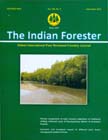Evaluation of Polypit Technique for Adaption in Forest Nurseries
DOI:
https://doi.org/10.36808/if/2012/v138i9/21802Keywords:
Polypit, Forest, Nursery, Saplings, Survival And Growth, Himalayan RegionAbstract
The cold and temperate climate in Himalayas with frosty nights makes it difficult to raise saplings for plantations in open conditions. To explore the practicality and effectiveness of adapting the polypit technique for the nurseries of Uttarakhand Forest Department, 20 different forestry species were raised in polypit as well as under open conditions and their survival and growth parameters like shoot length, root collar diameter, leaf area and dry biomass were measured and compared. Out of the 20 species, 6 species gave extremely good survival and growth results in polypit. 12 other species gave inconclusive results while the rest 2 species gave unfavorable results in polypit. Based on the results, it is recommended that all the forest nurseries in Himalayan region may adopt the polypit technique for raising plants of Quercus leucotrichophora, Cinnamomum tamala, Acer oblongum, Punica granatum, Boehmeria rugulosa and Diploknema butyracea.Downloads
Download data is not yet available.
Downloads
Published
2012-09-01
How to Cite
Verma, N., & Verma, A. (2012). Evaluation of Polypit Technique for Adaption in Forest Nurseries. Indian Forester, 138(9), 822–827. https://doi.org/10.36808/if/2012/v138i9/21802
Issue
Section
Articles
License
Unless otherwise stated, copyright or similar rights in all materials presented on the site, including graphical images, are owned by Indian Forester.





